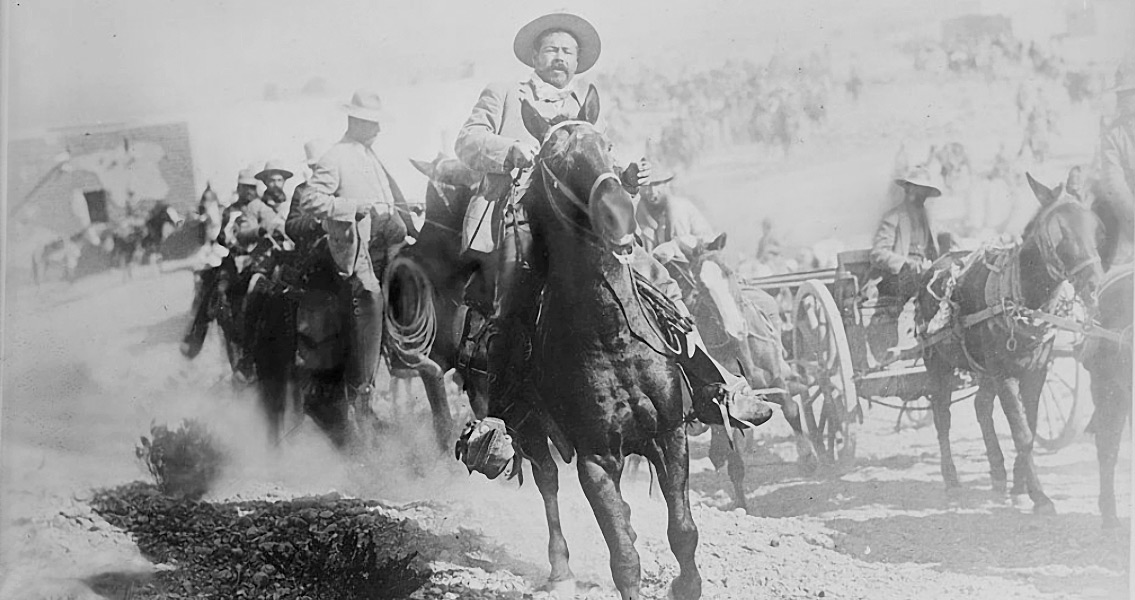<![CDATA[On 9th March 1916, General Francisco “Pancho” Villa launched an attack on the American town of Columbus, New Mexico. Located close to the border between the United States and Mexico, Pancho Villa's assault on the town brought the horrors of the Mexican Revolution to US soil. Mexico's Revolution had started in 1910, with the overthrow of the thirty year dictatorship of Porfirio Díaz, a leader who had led Mexico through industrialisation, but created extreme economic and social inequality in the country. Pancho Villa, along with the likes of Emiliano Zapata, had been a crucial leader in the rebellion which toppled Diaz and installed Francisco Madero as Mexico's leader. Madero's government quickly became unpopular due to the slow implementation of long promised reforms, leading to another uprising. Madero was replaced with the similarly unpopular Victoriano Huerta, who was pressured into exile in 1914 by a combined force of troops led by Pancho Villa, Venustiano Carranza and Álvaro Obregón. Carranza declared himself president following Huerta's resignation, an action which enraged Pancho Villa, leading to years of violent conflict, and borderline anarchy, as he led a campaign against the Carranza regime he considered illegal. Pancho Villa's attack on Columbus was motivated by US President Woodrow Wilson's decision to lend American support to Carranza's government. The United States had found itself increasingly involved in the Mexican Revolution since it started in 1910. Initially, the US had backed Pancho Villa's rebellion against Carranza's administration, but a series of belated democratic reforms by Carranza were enough to win American support. Seeing the change in American policy as a betrayal, Pancho Villa turned his forces on the USA and quickly revealed his willingness to attack American citizens. In January 1916, in a precursor to the later attack on US soil, Pancho Villa and his forces kidnapped and killed 18 Americans traveling on a train in Mexico. A few weeks later, in March, Pancho Villa led a force of 1,500 troops across the US-Mexico border. The attack on Columbus was swift and brutal, nineteen people were killed, and the town was left to burn as Pancho Villa's forces withdrew back into Northern Mexico. President Wilson had no choice but to respond. Carranza agreed to allow US troops into Mexican territory to capture Pancho Villa. Led by General John Pershing, 6,000 American soldiers crossed over the border to begin a long and fruitless hunt. The American forces enjoyed the benefits of the most modern military technology available at the time, and yet failed to capture their target. It seems that Pancho Villa's men's extensive knowledge of the local terrain, combined with the support of communities in Northern Mexico, enabled them to evade capture, and limit their engagements with the US forces to a few minor skirmishes. In 1917, as a result of mounting popular pressure, Carranza withdrew permission for the US soldiers to remain on Mexican territory. Pancho Villa continued his campaign against Carranza's government, although he never again attacked US territory or citizens, having realised the severe consequences of doing so. Carranza was eventually overthrown in 1920, an event which saw the fugitive Pancho Villa pardoned by the new Mexican government. Pancho Villa was assassinated in 1923, despite his involvement in Mexican politics having finished with his pardon in 1920. The strained relationship between Mexico and the United States continued for decades after the attack on Columbus, however.]]>
Pancho Villa Attacks the USA
